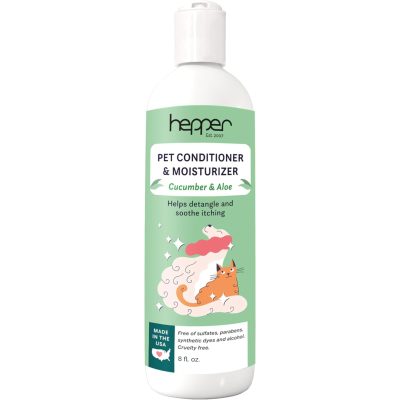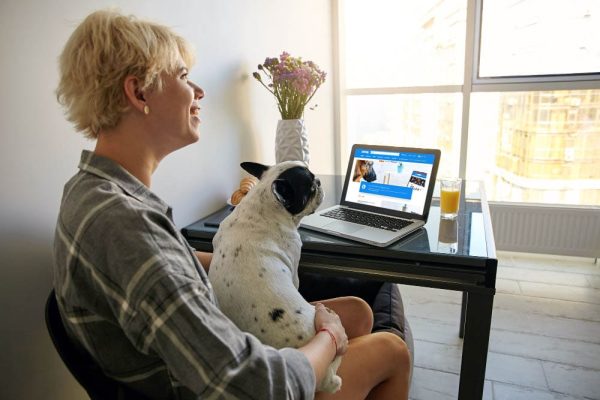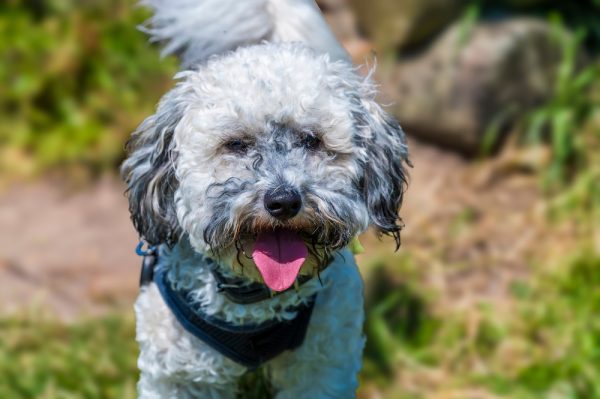Getting a new puppy can be really exciting, but it also comes with a lot of responsibility. On top of feeding and playing with the puppy, you also have to ensure you keep them healthy by completing their vaccination and deworming schedules and bathing them to keep them clean.
Giving your puppy a bath at a young age can also help them get used to getting bathed. However, bathing your puppy too much can negatively affect their already sensitive skin. So, how frequently should they be bathed? How often you bathe your puppy depends on their age. In short, puppies under 8 weeks should not be bathed. Puppies between 8 weeks and 6 months old should be bathed once per month, and puppies over 6 months can be bathed more frequently. Keep reading for this information and more.

How Often Should You Bathe a Puppy?
If your puppy is less than 8 weeks old, it’s not a good idea to give them a bath. For puppies older than 8 weeks but younger than 6 months old, you should bathe them at least once per month. Once your puppy gets older than 6 months old, it may be necessary to bathe them more frequently. But what is the reasoning behind these time frames? It all has to do with your puppy’s skin and fur.
Why Age Matters
When puppies are younger than 6 months old, they haven’t developed their full coat yet. They have what is known as a puppy coat, a soft coat that essentially helps regulate the puppy’s body temperature.
But you shouldn’t bathe a puppy younger than 8 weeks old because they can’t regulate their body temperature on their own, so bathing them could cause them to get too hot or cold.
Once a puppy is a couple of months old, they’ll have that soft puppy coat. However, it is important to remember that it isn’t as full and thick as the coat of an adult dog. The skin is more exposed and more sensitive to different substances, including the shampoo used during bathing.
When puppies are bathed, shampoo not only cleans their fur but can also strips away moisture and oils from their skin. Bathing a puppy too frequently can cause their skin to dry out. If a dog’s skin becomes too dry, it can become flaky and itchy and lead to infections.
This is why the time frame of bathing once a month is recommended. It’s just frequent enough to keep their fur clean and get them used to the concept of being bathed.
Of course, if your puppy rolls in mud or gets dirty in another way, it is okay to bathe them even if you’ve already bathed them this month. You just don’t want to bathe them daily or even weekly because it doesn’t give their skin enough time to produce the oils and moisture that keep their skin healthy.
Sometime between 6 and 12 months, your puppy’s soft coat will grow into an adult coat. Depending on the coat type and the dog’s environment and activity level, you may need to bathe them more or less often than once per month as an adult.

What Do You Need to Bathe a Puppy?
To bathe a puppy, all you need is a shampoo formulated for puppies, a place to bathe them, and some water. Remember that if the puppy is younger than 8 weeks old, you want to avoid giving them a full bath. Instead, you can dampen a washcloth and give them a gentle wipe down.
But if your puppy is over 8 weeks old and can get a full bath, you’ll need to bathe them in either the sink or the bathtub indoors, or you can invest in a kiddie pool or doggie bathtub to bathe them outdoors.
Finally, it’s very important that you only use puppy shampoo when bathing a puppy. Puppy shampoos are designed to be gentler on the skin. They also won’t irritate a puppy’s eyes if the shampoo gets into them, and ideally, it should also be hypoallergenic. However, the shampoo can still dry out your puppy’s skin if used too often.

What Is the Best Way to Bathe a Puppy?
The easiest and best way to bathe a puppy is indoors in the bathtub, kitchen sink, or utility sink. There are pros and cons to each of these. If you use the bathtub, your puppy will be less likely to climb over the side, but you’ll have to stoop or kneel to bathe them. Using a sink will make it easier for your puppy to climb out, but you can bathe them standing up.
Keep in mind that your puppy’s first bath will be a new and scary experience for them. For small-breed puppies, the bathtub may seem intimidating at first, so it may be better to use the sink. You can always transition to the bathtub later. But no matter where you decide to bathe your puppy, it is crucial that you ensure the environmental temperature is not too cold and that you don’t leave them unattended. They could jump out and get hurt.
1. Wet

The first thing you’ll want to do is ensure the water temperature is lukewarm. Avoid using hot water because it can be too hot for your puppy’s skin to handle, while cold water will be a negative experience.
It’s a great idea to place an anti-slip mat on the bottom before placing your puppy in the sink or bathtub. Before they have time to react, give them a treat. This will allow them to associate the bath with something positive and can also be a way to distract your puppy from the water. Next, use the showerhead or sink sprayer to carefully wet your puppy’s body from the neck down.
2. Shampoo

Once your puppy’s body is wet, squirt a small amount of shampoo into your hands and rub it over your puppy’s fur until it forms a lather. Make sure you avoid your puppy’s face, especially the eyes, nose, and mouth, but make sure to get their belly, legs, and tail area. You do need to wash your puppy’s face, but it’s best to do it at the very end and use a washcloth to do so gently.
Some puppies may be wary of being shampooed at first and may give you a hard time. It’s important not to scold your puppy since bath time is a new experience. But if this is the case for your pup, it is okay to bathe them with water at first. It will be enough to get them clean and used to being bathed. Once they are used to it, you can try shampoo again during the next bath.
Our Favorite Products
Selecting the right shampoo and conditioner makes the world of a difference when grooming your pup. Our favorite products are the duo by Hepper. The Oatmeal Pet Shampoo is formulated with aloe and oatmeal to soothe skin and hydrate the coat. The Pet Conditioner works at eliminating tangles and taming frizz and static. Both products are pH-balanced and formulated with pet-friendly ingredients, free of harsh soaps, chemicals, and dyes. Give this duo a try to heal and nourish your dog's coat, and leave them with an irresistible just-left-the-spa cucumber and aloe scent.
| Image | Product | Details | |
|---|---|---|---|

|
Hepper Oatmeal Pet Shampoo |
|
Check Price |

|
Hepper Pet Conditioner |
|
Check Price |
At Dogster, we’ve admired Hepper for many years and decided to take a controlling ownership interest so that we could benefit from the outstanding designs of this cool pet company!
3. Rinse

After washing your puppy thoroughly, rinse out the shampoo by running the water back over the fur. Make sure to rinse all the shampoo out. It can make your puppy itchy and irritate their skin if you don’t. You can stop rinsing when the water runs clear.
4. Dry

After rinsing, wrap your puppy in a towel. Dry the fur as thoroughly as possible, especially if the puppy is still young. Younger puppies get cold more quickly, so it is vital that you don’t let them remain soaking wet for an extended period. Your puppy may try to dry off by shaking their fur, so be prepared for that because it can make you wet, as well as other areas of the bathroom.
After drying off your puppy, reward them again with a treat, and be sure to give lots of praise. Again, a treat allows the puppy to associate bath time with something positive, while the praise lets them know that they did a good job. Once your puppy learns that they’ll get praise and a treat for taking a bath, they’ll be more willing (and maybe even excited) to get a bath in the future.

Final Thoughts
Caring for a puppy involves more than just feeding and playing with them. It also involves bathing your puppy so their fur can stay clean and healthy. Remember that a puppy’s fur and skin are still sensitive, so you don’t want to bathe your puppy too often because it can dry out their skin. Usually, a puppy can be bathed around once a month unless they get dirty and need to be bathed sooner. After a few baths, your puppy should be used to it, and bath time will get easier.
- See also: Panda Pug: Pictures, Info & Care
Featured Image Credit: Kasefoto, Shutterstock



















